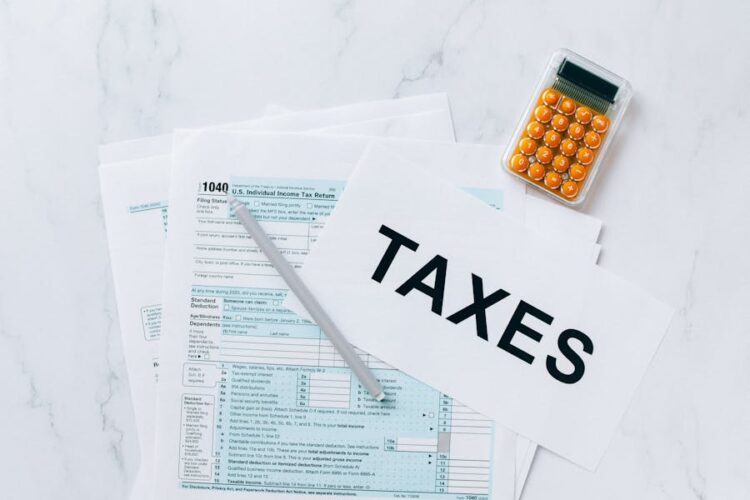Tax is a tough topic to tackle if you’re out of the loop on the latest regulatory changes. Small business owners are especially impacted by shifts in filing regulations, which can occur annually.
With this in mind, and to help self-employed people and decision-makers at smaller companies stay on the right side of the IRS, here’s an overview of the latest changes you need to know about.
The Impact of New 1099-K Reporting Rules on Self-Employed Individuals
New 1099-K reporting rules, initially set to apply in 2023, now face delays. These regulations target third-party networks like PayPal and Venmo. For self-employed folks earning over $600 through these platforms, expect to use a Form 1099-K to report this in the near future. It may seem tedious but it’s a must for accurate income tracking.
Small business owners need a strategy. It’s sensible to:
- Double-check received forms against records.
- Update bookkeeping practices to align with new requirements.
It goes without saying, but reporting all taxable income remains mandatory. And the 2023 threshold of $20,000 for the 1099-K form is still relevant for all sorts of freelancers and sole traders.
Although the introduction of the lower limit has been postponed, understanding this shift matters now. It’s a way of streamlining processes before the implementation begins in earnest. And for self-employed people using any version of the 1099 form, adopting a simple quarterly tax calculator to understand obligations ahead of filing time is another sensible preparatory step.
Accommodating Changes in Tax Brackets for Small Business Owners
With inflation still sitting at around 3%, tax brackets for 2023 offer slight relief to small business owners. These tweaks allow for a potential reduction in overall tax liability, as the threshold for higher rates moves upward.
Knowing where you stand lets you plan accordingly. To do this:
- Assess if your income falls into a lower bracket than last year.
- Use accounting software that reflects new tax rates.
Keep an eye on these shifts because they affect estimated taxes and quarterly payments. Having clarity can help allocate funds more efficiently throughout the year.
For self-employed professionals, regularly reviewing this data ensures better financial decisions. For instance, if you’re planning to expand your operations or investment in new equipment, aligning this with current brackets lets you optimize after-tax income and strategize for future growth.
The Ins and Outs of the IRS Direct File Pilot
The IRS’s new Direct File pilot aims to simplify tax filing. This system allows taxpayers in twelve states to file directly with the IRS, offering a glimpse of potential future norms. In the 2025 tax season, it will be rolled out in full.
For small business owners it’s necessary to:
- Understand eligibility criteria before considering this route.
- Recognize that it’s designed for straightforward returns, not complex ones.
While convenient, it doesn’t accommodate the types of intricate filings that are typical of businesses. If you fit the program, you can enjoy bypassing third-party software fees, which is a bonus when margins matter!
It’s wise to stay informed as this evolves since future expansions could include more comprehensive capabilities. Meanwhile, exploring other digital tax solutions remains practical, and working with tax-focused legal experts is also an option for business owners.
Unpacking Inflation Adjustments to Standard Deductions
Standard deductions have risen in response to inflation, providing a chance for small business owners and self-employed professionals to reduce taxable income without itemizing.
Keep these in mind:
- The higher deduction lowers your taxable base.
- For those 65 or older, additional amounts increase benefits.
While appealing for many filers, choosing between standard and itemized deductions is key. Analyze if total business-related expenses exceed the new threshold. Otherwise, stick with the simplified approach.
In short, regularly evaluating tax strategy based on updated figures maximizes savings opportunities while ensuring compliance.
For solo entrepreneurs who mix personal and business finances, tracking eligible expenses throughout the year simplifies decision-making when it’s time to file. Being proactive means you won’t overlook any allowable deductions.
Scrutinizing State Rebate Payments and Their Federal Tax Implications
Recent state rebate payments or inflation relief checks can have federal tax implications for small business owners. The IRS clarified that most are non-taxable, easing potential reporting concerns.
It’s worth noting that:
- Some states like Minnesota and Arizona deem certain payments taxable.
- It’s best to consult a tax professional if you’re unsure about specific amounts received and owed.
These distinctions become crucial when finalizing year-end financial statements. Accurate categorization prevents unnecessary liability while also maintaining compliance with varying regulations across different jurisdictions.
For those who benefitted from such rebates, it’s once again important to be proactive in providing accurate records that reflect real taxable income levels. Staying informed keeps your business aligned with the latest rules, and avoids the ire of the IRS through compliant accounting practices.
Benefits and Limitations of the IRS Free File Program
The IRS Free File program connects eligible taxpayers with tax prep partners to file returns at no cost. With a raised AGI limit of $79,000, more small business owners may benefit from this initiative, and a 10% uptick in usage has been reported by the IRS.
To make the most of this:
- Check eligibility criteria specific to business income types.
- Remember that not all software options support complex filings involving deductions or credits.
This free option helps those within simpler brackets avoid fees and manage their tax obligations efficiently. However, professional help or specialized software is more useful for those with more in-depth tax returns to put together. Thus a bespoke approach is best when making this decision.
Wrapping Up
It’s worth restating that in spite of the intimidating nature of tax filing regulations, working with the right software and the right professionals will allow even the smallest business to reap the biggest benefits from this scenario. So if you don’t know your 1099-K forms from your standard deductibles, bring in the experts rather than going forward solo.










